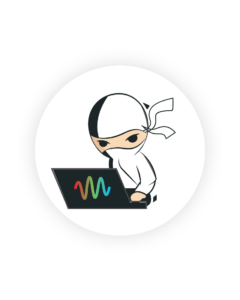
Jun 14, 2023
Improve B2B Customer Retention and Reduce Churn with Sentiment Detection
Customer Successsentiment analysisemployee retentionchurn reduction
The quality of your customer experience has a big impact on your bottom line. According to McKinsey, investing in a better CX experience can reduce B2B customer churn by up to 15%. And in B2B, where businesses typically have fewer customers—and each one could be worth millions of dollars in revenue—B2B customer retention is paramount.
B2B customer retention strategy must include a proactive support experience and to stay competitive that means leveraging AI. By analyzing customer sentiment, support teams, who are on the frontlines each day with customers, can intervene at key moments. They can proactively resolve customer issues and help create an environment that fosters customer retention.
Win over new customers early on
Support and Success teams are often the first contact for B2B customers, so they are essential to building trust during those early days. Success leads product demos and pilots for new customers, ensures successful onboarding, and troubleshoots product-related issues along the way. Support is often the front line for revisiting the leaky spots in any of these areas.
Support and Success teams need an intelligent, proactive approach to consistently deliver a world-class service experience during that vital time. The tool also helps support teams flag insights about a customer that could be critical to your budding relationship.
Imagine you’re the support manager at a company that provides project management software. Your support team receives a message from a new customer—a digital payment company with 200,000 employees. They are trialing your software with a small group of employees and are experiencing issues with one of your product’s automation features.
Using a traditional CRM system alone, a support team might not flag the case as urgent. The case gets lost in the daily firefighting of hundreds of other tickets. The customer feels ignored, and a vital opportunity to win their trust is lost.
With automatic alerts tuned to proactive signals and high-priority customers, as soon as the case is opened you’d receive an alert to examine the case data. You quickly understand the urgency, loop in the right engineer, and resolve the issue for the customer promptly.
The result: The customer is pleased with the support experience. Once the trial is over, they sign an extended contract with your company worth several hundred thousand dollars.
Proactively nurture and retain longer-cycle customers
Many factors can contribute to retaining a customer and keeping them happy—or not. Let’s look at a few ways that an intelligent, proactive support system can help improve B2B customer retention.
Predict and prevent escalations
B2B customers depend on your company’s services or products to run their own businesses, so any disruptions can be extremely costly for them—and for your relationship. By adopting AI-based support technology, your support team can predict escalations, head them off proactively, and keep your customers happy.
At the heart of our technology is customer sentiment analysis. SupportLogic’s SX platform continually extracts the unstructured data in cases—things like email text, call transcripts, and case notes. Analyzing that data with Natural Language Processing (NLP) and Machine Learning (ML), SupportLogic creates two scores: a customer sentiment score and an attention score, as well as a “likely to be escalated” prediction.
- Sentiment score (the higher, the better): 70 indicates a “C average,” and as you go upward toward 100, the customer is happier.
- Attention score (inverse to sentiment score, starts at 30): as you go upward toward 100, the case is more urgent and requires more immediate attention.
- “Likely to be escalated” prediction: predicts and recommends preemptive corrective actions by identifying the factors that are driving the case toward escalation.
Within SupportLogic’s dashboard, you can look at these numbers and quickly understand how a customer is trending. Are they happy or trending toward frustration over an unresolved issue? Are they in danger of escalating a case and need urgent attention? SupportLogic helps identify high-priority cases, so you can assign them to the right agent or technical expert—within minutes.
Being proactive in identifying and resolving issues helps ensure the customer’s product experience is smooth and frictionless. Being proactive with clients also shows that you care about their experience—which in turn increases B2B customer retention and helps minimize churn.
Understand how customers use your product and leverage those opportunities
Real-time sentiment analysis is key to understanding the root cause of issues, such as product pain points and barriers to customer renewals. Is a customer experiencing an error or bug when upgrading to the next software version? Did they express interest to a support agent about adding a new product feature? This is all valuable information that can improve customer retention, your bottom line, and your product.
SupportLogic captures and surfaces those customer insights. Let’s go back to the example of the digital payments platform. Imagine that during a routine support call, an IT manager at this company expresses interest in implementing your software in their international offices in addition to those in the U.S.
With a CRM alone, that detail might get buried within the dozens of support interactions that occur weekly with that particular customer. With SupportLogic SX, however, that comment is flagged and brought to your attention. You share that information with sales or customer success, so they can proactively reach out to the customer and capitalize on it.
It’s not just about spotting opportunities for upgrades and upsells. Understanding how a customer is satisfied—or dissatisfied—with your product can be leveraged for more meaningful, informed Quarterly Business Reviews (QBRs) and renewal talks. You build loyalty and trust, which leads to a customer increasing their use of your product, which translates into protecting and expanding revenue.
Use sentiment analysis to provide a unified customer experience
To improve B2B customer retention, you must continually assess a customer’s health, identify where it’s trending, and share those insights across your business. But this is easier said than done in B2B, where a support team usually has many open cases with a single customer on any given day.
Adding to the complication, B2B support teams interact with entire teams and departments at a company, not just a single person. Within these interactions—the multitudes of emails, calls, chats, and notes—it’s easy for important customer insights to get buried, muddled, or lost altogether.
SupportLogic provides a single panoramic view of the customer, which your entire business can see and understand. The SX platform automatically extracts customer sentiment, churn risk, product feedback, and feature requests and serves up those insights in a single, easy-to-read dashboard.
Anyone in a company, from executives to engineers to frontline support agents, can log into the SupportLogic dashboard to get an account snapshot. And they can communicate with each other inside the platform via email, Slack, or Microsoft Teams.
You can also segment your customers by region, type, NPS score, churn risk, and a myriad of other factors. Empowered with this information, you can reach out to customers at key moments and proactively resolve any issues, thereby improving satisfaction and customer retention.
Improve B2B customer retention with SupportLogic
In today’s highly competitive B2B market, support teams must be able to access the right customer information in real time and leverage insights to help improve customer retention and expand revenue. With SupportLogic’s powerful features—such as predictive alerts, customer snapshots, and easy collaboration—your support teams can do exactly that.
Get started with a test drive today.
Don’t miss out
Want the latest B2B Support, AI and ML blogs delivered straight to your inbox?





